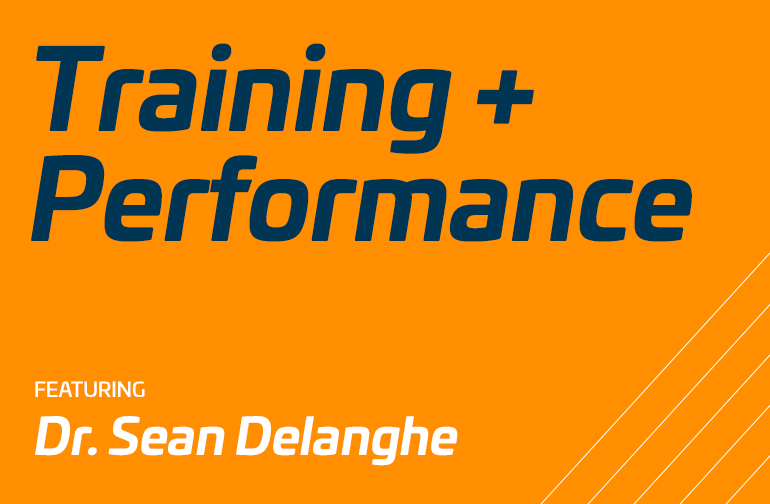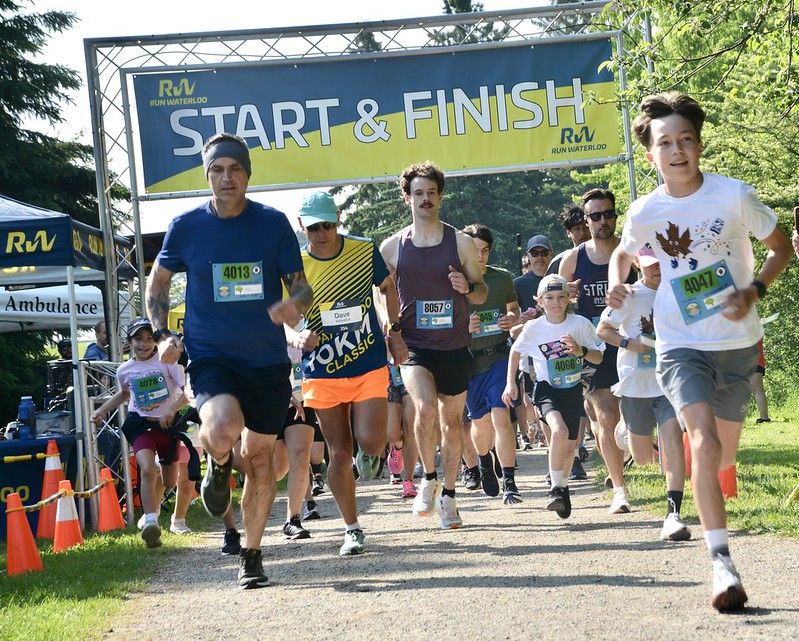 Well, it’s November. That means that we have some cold days of running ahead of us. Before you spiral into a pit of despair, there may be some good news when it comes to your performance!
Well, it’s November. That means that we have some cold days of running ahead of us. Before you spiral into a pit of despair, there may be some good news when it comes to your performance!
In the past, I’ve written about how running in the heat can enhance performance even while racing in cool temperatures. You can check out my full article here. Now, the question is if we can get a similar physiological boost from running in the cold. That’s what I want to take a look at with this article.
Study #1: The effects of cooler temperatures on performance
To start, one group of researchers published this study in 2012, which took runners through a series of tests at various temperatures (-14°C, -9°C, -4°C, 1°C, 10°C and 20°C). Parameters they looked at included:
- V02max (maximum ability to consume oxygen per unit of time)
- Time to exhaustion
- Running economy (how efficiently the oxygen being brought in transfers to running speed)
- Running speed at their lactate threshold (how fast you are running at the point where lactate exponentially increases in the blood)
Some key results included:
- Speed at the lactate threshold was faster at the -4°C trial compared to –9 and 10
- Time to exhaustion was the best at -4°C and 1°C
- V02max was the same in all trials
So what this shows us is that running in cooler temperatures does not increase or decrease our ability to consume oxygen. However, what it CAN do is enhance how efficiently we use that oxygen on moderately cold days (i.e. up to ~ -4°C). However once we start getting even colder (-9°C and beyond) that performance boost goes down.
What this means for us is that we may have some of our fastest, confidence boosting workouts to come throughout the next few months. Heck, if the temperature is hovering around zero, studies like this one show that you will be able to take full advantage of the oxygen you trained so hard to be able to consume in high quantities. These near 0°C temps trump beat even the seemingly more comfortable temperatures from 2 to 10°C. This, of course, is specific to the conditions of this study, which included subjects, wearing “cross country ski clothes.”
Study #2: The physiological impact of cold
The above study is great in confirming that we can run at our best in moderately cooler temperatures. However what it also shows is that as things get increasingly cold (-9°C and beyond), our performance begins to drop again.
In my previous post on adaptations to heat training, I talked about the increase in plasma volume that results in the stretching of our hearts, which triggers a stronger recoil when it pumps. This more forceful recoil results in a higher stroke volume and therefore improved blood transportation. So, yes, we know training in the heat slows us down, but also that there is a hidden, very specific advantage that will make us faster in all temperatures. Now, does running in performance-challenging cold temperatures induce similar or analogous adaptations that will make us faster in all temperatures too?
This study published in 2013 gives is a peek at an answer to this question. In their study, they had subjects run at 70% of their VO2max for 30 minutes. One trial completed it in the rain (man-made), and one without. Now, this study does not directly test extremely cold temperatures, nor does it have the largest sample size, but it does give us a clear and unique idea of what happens when our warming system is triggered.
What the researches found was that the rain trial resulted in higher oxygen consumption, higher perceived exertion and more lactic acid build up at a given pace. They also confirmed that the temperature of the runners during the rain trial was lower. In other words, rain made the runners cold, and being cold made them work harder to run at the same pace. The authors speculate that in part this is likely because the body is shunting more blood to the vital organs and less to the muscles that make us run fast!
However, this study (or any other study that I know of) does not show a clear way running in the cold offers an added boost in performance that you cannot also achieve at other temperatures. Getting that spike in plasma volume while training in extreme heat is unique to that environment. Sucking in more oxygen at a given pace is not unique to the cold since it’s something we can achieve simply by running faster.
Practical Applications:
It’s not all bad news now that the cold weather is upon us. First of all, moderately cold weather is where our best performances can be found. If you’re at the right stage of your training, use this weather to bust out some of your best workouts (or even races) of the year!
Secondly, as we get cold, it’s clear that the amount of oxygen we take in to maintain a certain pace goes up. So if a 5:00/K starts to feel harder than it used to as temperatures dip, do not fret; there is a good chance that you are equally as fit as before.
The optimist sees one indirect advantage that may arise from this increase challenge in the cold: if you have a certain pace in your mind that you know you can hit during a tempo workout, striving to hit that pace and refusing to go slower in cold weather will result in a higher level of exertion that you may have not summoned in more favourable conditions. Then, when the body processes and recovers from these types of workouts, there’s a good chance you’ll be in for a nice surprise when your tempo pace is faster (or the same pace is easier) under more moderate temperatures!
Of course, there is also the option to listen to your level of exertion, which can help guide you to slow down during cold weather workouts. Hopefully this article helps you to understand the slow-down and eliminate some of the anxiety that comes with it.







